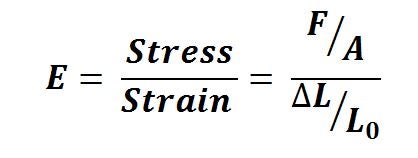
Homogenisers are widely used in biological sample preparation to break up (or homogenise) samples. This makes it possible to more easily extract macro and micro molecules such as DNA, RNA and proteins for further use including PCR. There is a wide choice of homogenisers on the market, ranging from those suitable for processing large sample volumes of up to a couple of hundred millilitres (such as the Omni Mixer) to homogenisers that will process multiple small samples at the same time (such as the Bead Ruptor 96 which can process up to 576 samples at the same time). You can check out our other blog post explaining the differences here.
Omni's Bead Ruptor range comprises of a selection of bead mill homogenisers suitable for high throughput sample processing. Omni have an extensive collection of tried and tested protocols using their equipment which can be found here. However when it comes to designing your own experiment from scratch, Omni have developed the below guidance.
How does a Bead mill homogeniser work?
When designing your bead mill experiment, it is important to consider first, the way in which a bead mill homogeniser works. Bead mill homogenisers work by rapidly accelerating solid beads within a vessel which dissociate the sample upon impact. Therefore to design your bead mill experiment, the following points should be considered:
- Sample type
- Sample size (lab-grade bead mills typically accommodate 2mg - 5g sample
- Material of beads (e.g. ceramic, glass, garnet, carbide and stainless steel)
- Bead density
- Bead diameter
- Tube velocity
Biological sample dissociation occurs in multiple phases. At a macroscopic level, organs are composed of many cell types, connective tissues and vasculature. Impacts of the beads with your sample disrupts cellular adhesion and connective tissue. Bead impacts then disrupts the cell membrane, releasing the organelle and other intracellular compounds (e.g. protein). Finally, the bead impacts can cause organelle lysis releasing any intra-organelle compounds, for example DNA.
Understanding a materials elasticity is essential when designing a bead mill experiment. A materials Young's modulus is proportional to the sample's resistance to dissociation. The Young's modulus is a measure of the ability of a material to withstand changes in length (strain) when under lengthwise tension or compression (stress) and is defined mathematically by the following formula.

Samples with increasing Youngs modulus
- Liver
- Muscle
- Skin
- Oak leaf
- Rubber
- Hair
- Wood
- Bone
- Tooth enamel
Cells also exhibit differences in elasticity so the cell's Young Modulus must be considered when designing your bead mill experiment.
The material of the beads, density and diameters determine the kinetic energy imparted to the sample during impact and ultimately establish the dissociation efficiency. As material density and diameter increases, the kinetic energy of the projectile increases. An increased kinetic energy = increased lysis efficiency.
Bead diameters used should be proportional to the sample diameter. The most appropriate bead material changes with sample / cell type. Below is an overview of the recommendations:
- 0.1 / 0.5mm glass = Gram negative bacteria, Eukaryotic cells, fungal cells
- 0.1 / 0.5mm ceramic = Gram positive bacteria, virus
- 1.4 / 2.8 / 6.5mm ceramic = tissue , plant, environmental, forensic samples
Check out the full Omni Video here:
Camlab can supply the omni range in the UK, including bead mill homogenisers such as the Bead Ruptor Elite and rotor stator homogenisers such as the Omni Mixer. If you have any questions on designing your bead mill experiment, please feel free to contact us at support@camlab.co.uk .






